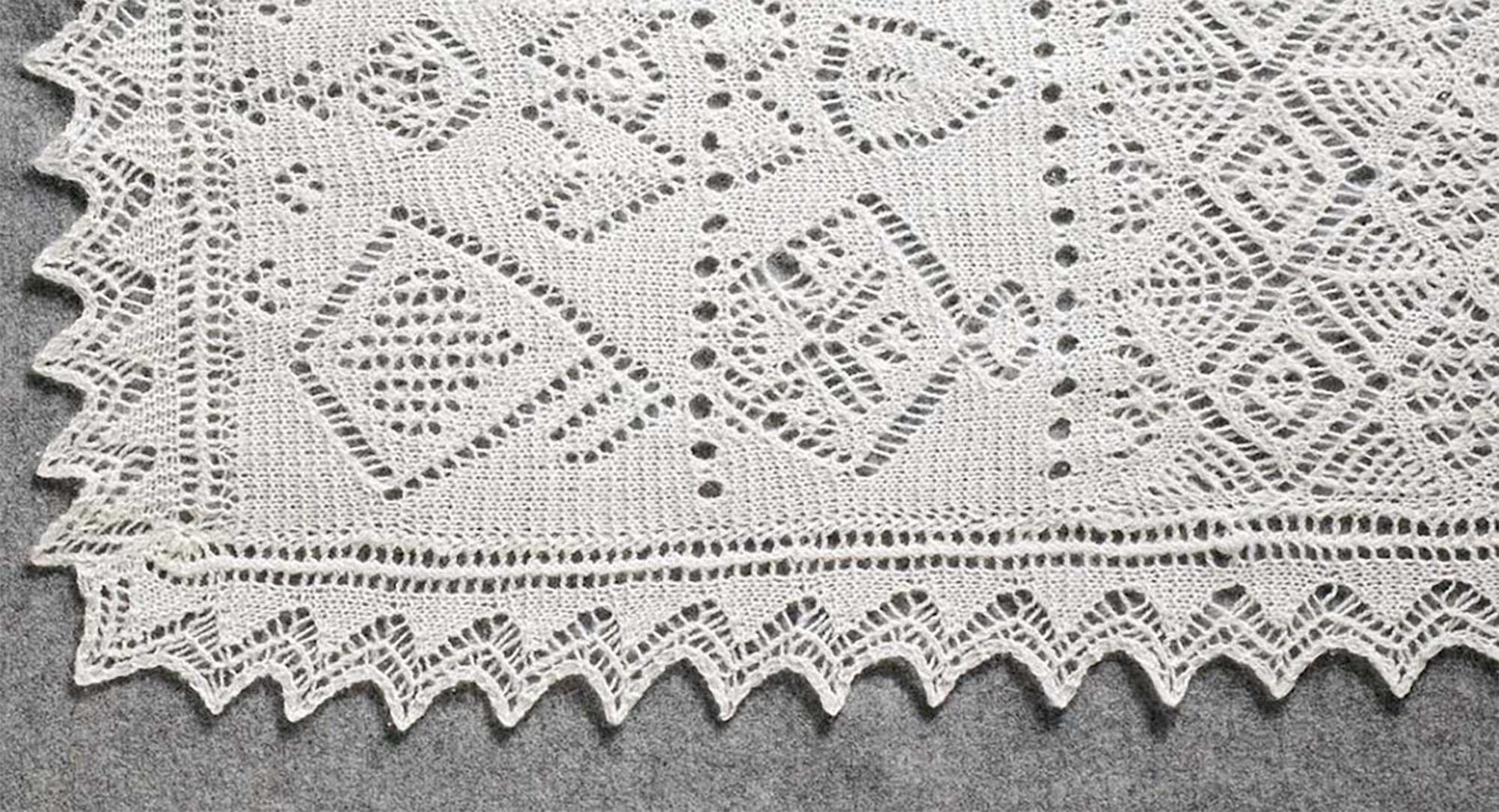In the play Dancing at Lughnasa, five sisters struggle to survive during the 1930s in rural Ireland. Knitted gloves play a key role in the plot of the story by providing much needed income for the women. In the September/October 2010 issue of PieceWork, Elizabeth Cobbe explains the challenges of bringing needlework to the stage.
The knitted gloves matter in the play because they are a source of income for the family and a visual reminder of the difficulty of the sisters’ lives. In real life, the gloves likely would have been knitted from fingering-weight wool on fine double-pointed needles, beginning at the wrist and working toward the fingertips. The style of the time was for gloves that covered 3 or 4 inches (7.6 or 10.2 cm) of the wrist before starting the thumb gusset. Any lace design or stitch pattern worked into the glove would have had to be relatively simple, given the volume and speed at which the sisters in the play are working.
Knitting gloves onstage, however, presents two challenges. First, the women who work on these gloves are simultaneously delivering lines and participating in the action of the play. Any knitter who has ever dropped a stitch while watching a movie will agree, it’s a fantastic knitter and a skilled performer who can work a complicated stitch pattern, or navigate double-pointed needles on the pinky finger of a glove, without dropping either her lines or her stitches.
Elizabeth Cobbe’s “Ballybeg Homeworker’s Gloves to Knit” were inspired by the play Dancing at Lughnasa. Photo by Joe Coca.
Second, the glove in progress must look like a glove to the audience, and a glove in progress before the knitter arrives at the fingers can be hard to identify. Sarah Gill, properties supervisor for the Tisch School of the Arts Graduate Theatrical Production Department at New York University, who has worked on three productions of Dancing at Lughnasa, has solved the dual problems of keeping the knitting relatively simple while maintaining the visual appearance of a glove. Her approach is to prepare a glove by knitting it from the base of the hand to the fingertips, then pick up stitches at the cast-on edge so that an actress can knit the wrist. Every few performances, the wrist is ripped back to the cast-on round, and the performer begins knitting it all over again.
The solution is a good example of how to include knitting and other needlework in a stage production in a way that’s both realistic and manageable. Doing so means offering the audience a special insight into the lives of the play’s characters and the world in which they live—detail that dialog by itself can’t quite capture.
Elizabeth Cobbe lives, writes, and knits in Austin, Texas. She is a playwright and a contributing arts writer to the Austin Chronicle.
Download a copy of the September/October 2010 issue ofPieceWork,_ to read the rest of Elizabeth Cobbe’s article “Knitting Gloves in Brian Friel’sDancing at Lughnasa” and cast on a pair of Elizabeth’s “Ballybeg Homeworker’s Gloves to Knit.”_


